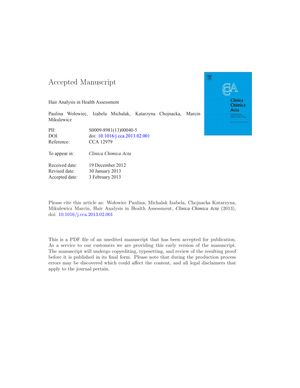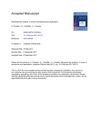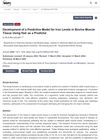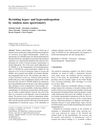22 citations
,
November 2010 in “Toxicological & Environmental Chemistry Reviews” Smokers and people with dyed hair have higher levels of certain metals in their hair.
4 citations
,
January 2010 in “Korean Journal of Family Medicine” Breast cancer patients have lower hair zinc levels, which strongly decrease as BMI increases.
21 citations
,
April 2009 in “Trace Elements and Electrolytes” Autistic children have lower iron and higher selenium in their hair.
70 citations
,
February 2009 in “Biological Trace Element Research” 44 citations
,
November 2007 in “Journal of toxicology and environmental health. Part B, Critical reviews” Copper and zinc in hair can indicate health conditions.
 16 citations
,
March 2007 in “The Veterinary clinics of North America. Food animal practice”
16 citations
,
March 2007 in “The Veterinary clinics of North America. Food animal practice” Proper mineral supplementation in cow-calf operations prevents health issues and economic losses.
27 citations
,
December 2006 in “Environmental Science & Technology” LA-ICP-MS can effectively track mercury exposure over time in hair.
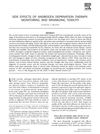 228 citations
,
February 2003 in “Urology”
228 citations
,
February 2003 in “Urology” Androgen deprivation therapy for prostate cancer can cause sexual, physical, and psychological side effects, and doctors should manage these carefully.
241 citations
,
January 2001 in “Reviews on Environmental Health” High selenium exposure can harm thyroid function, immune system, liver, skin, and may increase neurotoxicity and cancer risk.
25 citations
,
June 1998 in “Biological Trace Element Research” Young women with diabetic parents have high zinc and low copper levels.
